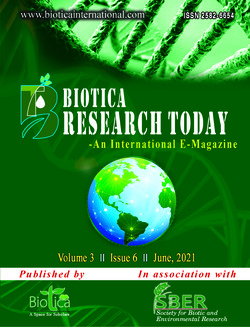
Compensatory Growth Concept and Its Impact on the Aquaculture Sector
Abhilipsa Biswal*
Division of Fish Nutrition, Biochemistry and Physiology, ICAR-Central Institute of Fisheries Education, Versova, Mumbai, Maharashtra (400 061), India
Prem Prakash Srivastava
Dr. Rajendra Prasad Central Agricultural University, Pusa, Samastipur, Bihar (848 125), India
DOI: NIL
Keywords: Anabolic, Catabolic, Compensatory growth, Lipostat Model
Abstract
Compensatory growth is signified by growth depression in unfavourable feeding conditions or environmental conditions, followed by an accelerated growth rate on the arrival of regular feeding or environmental conditions. This is characterized by two phases, i.e., initial catabolic phase in which period body utilizes the endogenous energy reserves whereas an in anabolic phase accelerated growth trajectory is achieved by utilizing the external source of nutrients. This growth stunting and further achievement of growth increase occur under the endocrinological regulation of fish body. Growth hormones (GH), Insulin-like growth factor (IGF), ghrelin, NPY are the prime hormones and neuropeptides associated with the growth regulation of fishes during compensatory growth. The concept of compensatory growth has its own set of advantage and disadvantages and it’s considered to be an ideal model for being utilised in aquaculture sector.
Downloads
not found
Reference
Jobling, M., 1994. Book of fish bioenergetics, Fish and fisheries 13.
Jobling, M., Johansen, S. J. S., 1999. The lipostat, hyperphagia and catch-up growth. Aquaculture Research 30, 473-478.
Won, E. T., Borski, R. J., 2013. Endocrine regulation of compensatory growth in fish. Frontiers in Endocrinology 4, 74.
